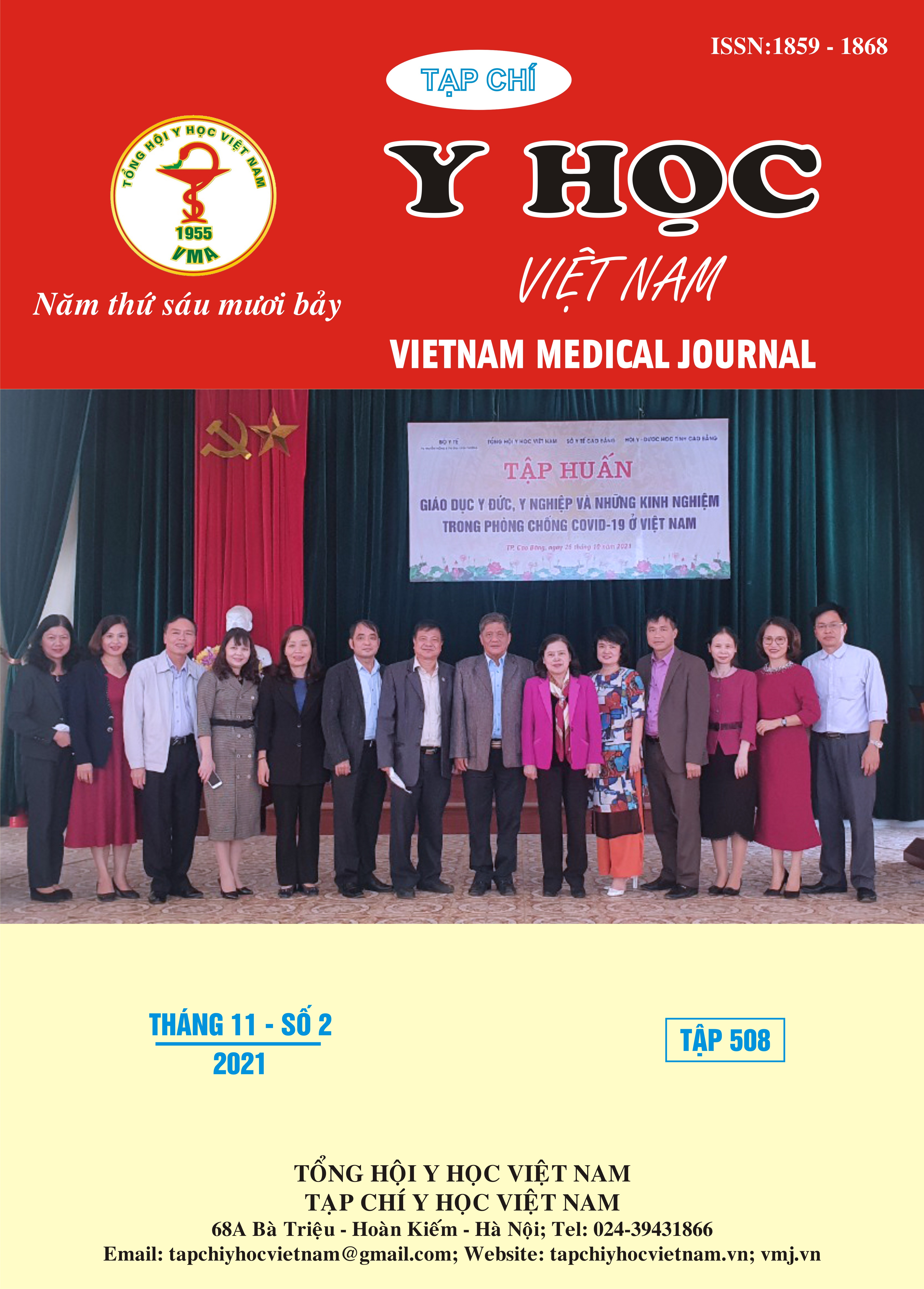INVESTIGATING LEVELS OF ACID URIC IN PATIENTS WITH LUPUS NEPHRITIS AND SOME RELATED FACTORS
Main Article Content
Abstract
Objectives: Investigating levels of acid uric in patients with lupus nephritis and the relationship between hyperuremia and some clinical, subclinical factors in this patient group. Subjects and methods: A cross-sectional, retrospective and prospective study on 117 lupus nephritis patients treated in Nephro – Urology and Dialysis Center, Bach Mai hospital from 01/2020 to 08/2021. Results: 117 study patients have an average age of 34.6 ± 1.11, with a male: female ratio of 1:9.64, and 35.9% of patients have detected the disease in 1 month. The rate of hyperuricemia accounted for 75.2%, the average concentration was 463.60 ± 13.03. The rate of increased uric acid in women was higher than in men, with statistical significance (p<0.01) although uric acid levels in the two sexes were not different (p>0.05). Symptoms such as pericardial effusion (57.7%), hypertension (56.4%), nephrotic syndrome (57.3%), anemia (87.2%) had a statistically significant difference between the 2 groups of hyperuricemia acid and non-hyperuricemia (p<0.05). On kidney biopsies in 46 patients, the rate of class III, IV was 30.6%, 61.1%, average uric acid concentration: 415.18±102.025 and 503.76±105.190, there was a statistically significant difference with p=0.019. Uric acid has a positive correlation with systolic blood pressure, pulmonary arterial pressure, creatinine, ferritin, anti-ANA, proteinuria with r = 0.188; 0.242; 0.476; 0.265; 0.206; 0.226 (p<0.05) and negatively correlated with glomerular filtration rate, urinary pH, hemoglobin, protein, C3 with r = -0.457; -0.241; -0.204, -0.261, -0.331 (p<0.05). Uric acid and disease activity levels based on the SLEDAI scale have positively correlated with the correlation coefficient r = 0.388 (p<0.001). Uric acid levels in patients with pulmonary arterial hypertension >40mmHg higher than non-pulmonary arterial hypertension: 560.1±173.03; 464.3 ± 131.31 with p<0.05. Conclusions: Increased uric acid was found in 75.2% of patients with lupus nephritis, predicting poor progression of lupus nephritis and complications of the disease (lower eGFR, more anemia, increased blood pressure, higher SLEDAI disease activity levels…) Keeping uric acid levels low is recommended to help avoid complications in lupus nephritis and serum uric acid levels should be adopted in medical practice when evaluating patients with lupus nephritis.
Article Details
Keywords
Hyperuricemia, Lupus nephritis, disease activity index, SLEDAI, CKD
References
2. Okba A.M., Amin M.M., và Reyad M.A.E.-D.& M.A. (2019). Hyperuricemia as an independent predictor and prognostic factor in the development of lupus nephritis. Int J Clin Rheumatol, 14(3), 91.
3. Yang Z., Liang Y., Xi W. và cộng sự. (2011). Association of serum uric acid with lupus nephritis in systemic lupus erythematosus. Rheumatol Int, 31(6), 743–748.
4. Tsumuraya Y., Hirayama T., Tozuka E. và cộng sự. (2015). Impact of hyperuricaemia on the chronic kidney disease-associated risk factors in a community-based population. Nephrol Carlton Vic, 20(6), 399–404.
5. Liu S., Gong Y., Ren H. và cộng sự. (2017). The prevalence, subtypes and associated factors of hyperuricemia in lupus nephritis patients at chronic kidney disease stages 1–3. Oncotarget, 8(34), 57099–57108.
6. Chizyński K. và Rózycka M. (2005). [Hyperuricemia]. Pol Merkur Lek Organ Pol Tow Lek, 19 (113), 693–696.
7. Nghiêm Trung Dũng (2018). Nghiên cứu đánh giá mức độ hoạt động, tổn thương mô bệnh học và tính đa hình thái gen STAT4; IRF5; CDKN1A trong viêm thận lupus. Luận Văn Y Học, , accessed: 04/10/2021.
8. Kim K.-J., Baek I.-W., Park Y.-J. và cộng sự. (2015). High levels of uric acid in systemic lupus erythematosus is associated with pulmonary hypertension. Int J Rheum Dis, 18(5), 524–532.


